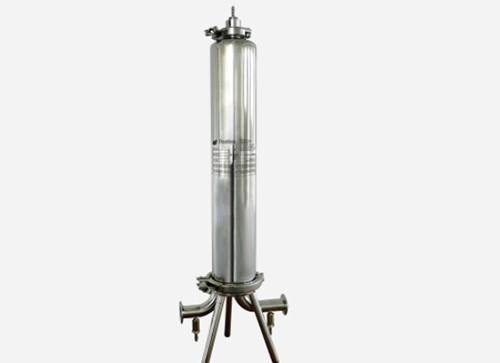In fluid management and filtration, in-line filter housings stand as unsung heroes, safeguarding the purity of liquids that flow through pipelines.
Table of contents
An in-line filter housing is a crucial component used in fluid management systems to ensure liquids flow through pipelines' cleanliness and quality. This housing, typically made of materials like plastic, stainless steel, or aluminum, encases a filter element that captures contaminants and particles in the fluid. Positioned within the pipeline, it acts as a safeguard, preventing unwanted substances from entering sensitive components and systems.
In-line filter housings are engineered with a careful balance of materials, design considerations, and functionality. They generally consist of the following components:
▪ Housing Casing: Typically crafted from materials like stainless steel, aluminum, or plastic, the housing casing provides structural integrity and shields the filter element from external influences.
▪ Filter Element: The heart of the housing, the filter element, comes in various forms such as mesh screens, pleated media, or cartridges. Its primary function is to capture particles and contaminants of varying sizes as the liquid passes through.
▪ Inlet and Outlet Ports: These ports facilitate the entry and exit of the liquid into and out of the housing. They are usually threaded for easy connection to the existing pipeline.
▪ Sealing Mechanism: To prevent leaks and ensure proper filtration, a reliable sealing mechanism is essential. It ensures that the liquid flows through the filter element and doesn't bypass it.
In-Line Filter Housing for Liquid Filtration
We can provide in-line filter housing and filter element custom design services for your industrial applications.
In-line filter housings find application in various industries, including water treatment, manufacturing, automotive, and more, where maintaining the purity of fluids is essential for optimal performance and longevity.
▪ Water Treatment: In residential, commercial, and industrial settings, in-line filter housings ensure the removal of sediments, chlorine, and other impurities from water, providing clean and safe drinking water.
▪ Manufacturing: In the manufacturing industry, these housings maintain the quality of liquids used in processes, preventing particles from compromising the final product.
▪ Automotive and Machinery: In vehicles and heavy machinery, in-line filter housings protect engines, hydraulic systems, and sensitive components from contaminants, contributing to longevity and efficiency.
▪ Oil and Gas: The oil and gas sector relies on in-line filter housings to maintain the purity of crude oil, refined products, and natural gas as they traverse pipelines and processing units.

▪ Regular Inspection: Periodically check the filter element for clogs or signs of wear. Replace the piece as needed to maintain proper filtration.
▪ Flow Rate Consideration: Ensure that the filter housing is appropriately sized to handle the flow rate of the fluid. Undersized housing can lead to pressure drops and reduced efficiency.
▪ Replacement Schedule: Follow manufacturer recommendations for filter element replacement intervals. This helps maintain consistent filtration performance.
In-line filter housings are an indispensable asset in liquid filtration systems, ensuring that liquids meet stringent quality standards and operate at their best. Understanding their design, purpose, and maintenance requirements empowers us to make informed choices about incorporating them into our pipelines and systems, contributing to enhanced efficiency and the overall quality of processes across various industries.